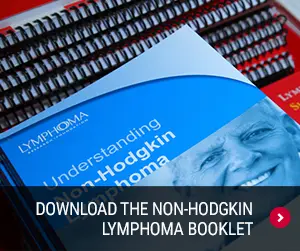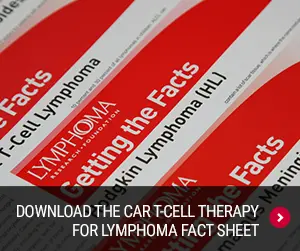
What is Lymphoma?
High-Grade B-Cell Lymphoma: Treatment Options
Since high-grade B-cell lymphoma (HGBCL, previously known as double-hit lymphoma) is a fairly new classification of lymphoma, ongoing research is helping doctors learn more about the best ways to treat this disease. HGBCLs are generally treated with one of the following combination chemotherapy regimens:
- DA-EPOCH-R (dose-adjusted etoposide/VP16 [VePesid, Toposar, Etopophos], prednisone [Deltasone and others], vincristine [Oncovin and others], cyclophosphamide [Cytoxan, Neosar], and doxorubicin/hydroxydaunorubicin [Rubex, Adriamycin PFS] plus rituximab [Rituxan])
- R-Hyper-CVAD (rituximab plus hyperfractionated cyclophosphamide, vincristine, doxorubicin, and dexamethasone [Decadron and others], alternating with high-dose methotrexate [Mexate and others] and cytarabine/high-dose Ara-C [Cytosar-U, Tarabine PFS])
- R-CODOX-M/R-IVAC (rituximab plus cyclophosphamide, vincristine, doxorubicin, and methotrexate, alternating with rituximab plus ifosfamide [Ifex], etoposide, and cytarabine)
Some patients with HGBCL may undergo high-dose chemotherapy followed by either an autologous stem cell transplant or an allogeneic stem cell transplant.
Compared with other types of B-cell lymphomas, HGBCL cells are more likely to spread to a patient’s central nervous system(CNS). To reduce this risk, patients with HGBCL may receive CNS prophylaxis in addition to one of the combination chemotherapy regimens described above. CNS prophylaxis is administered through a lumbar puncture, which allows the doctor to inject one or more chemotherapy drugs directly
To learn about treatments under investigation for HGBCL, download the High-Grade B-Cell Lymphoma Fact Sheet.


